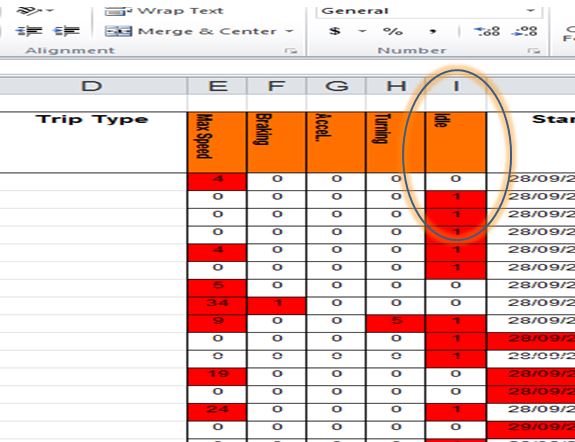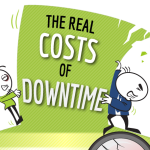
“Taofik had just passed Benin By-pass on his way to make a 30tonner delivery at Enugu. He had ‘Kara’ in sight and just about then he flipped on his right turn indicator light to alert other road users of intent to move in the direction of the flashing light. He turned into the road shoulder and then parked the long vehicle. He signaled to his motor-boy that he need to ‘quickly’ answer ‘the call of nature’ somewhere in the overgrown shrubs by the side of the road. He left the engine running and didn’t return until some 45minutes after.”
“Kelvin packed his truck bearing a 40ton cement cargo just by the side of the road somewhere within the metropolis. He needed to make a ‘quick’ drop there and had about 2 other places to go in order to fully offload his cargo. ‘It’s just 200 bags’, so he thought to himself. He left the engine running while he joined the motor boys in loosening the ropes to make room for the offloading. In about 1hr 15minutes, they were through. Same routine of leaving the engine running while he ‘quickly’ offloads was repeated for the two other offloading points.”
“Kunle was just on the outskirt of Abuja city somewhere near Gwagwalada when he hit a total lock-down in traffic. An accident had occurred some 4-5kilometers down the road and Kunle, just like other drivers had no option than to simply pray that a reprieve comes very soon. And just like virtually every other driver too in the traffic, he left his truck engine running and waited patiently for the expected solution. That solution did not come until after 2hrs 40min or thereabout.”
Wondering what the above intro is all about? Well, spare yourself the trouble as we welcome you into the world of IDLING! Idling is leaving your engine running when stationary and/or parked. The world of Idling is a culture of waste; a subtle and seemingly harmless driving habit but highly devastating to the bottom-line of most haulage companies. However, the twist to it is that not many haulage companies in Nigeria see it as a big deal to fret about.
We took up the issue with 4 different Fleet Managers in notable haulage companies and we were surprised that just one of them has ever heard of the word ‘idling’. The remaining three have never heard about the word but they understood when we described how the act plays out. Surprisingly, the four were in agreement that Idling (now that it appears they all understand what we were talking about) is not one of ‘those issues’ they bother their heads about. Even when we drew the attention of one of them to some aspects of the ‘Violators Report’ (See Figure 1) that the Company’s Fleet Management solution delivers every day to him, he simply claimed that he took it as an unnecessary ‘excessive reporting’ on the part of the fleet solution!
WHY IDLING SHOULD BOTHER YOU!
Well, here is why you, as a Fleet Manager or business owner with mobile assets constantly on the road powered with diesel should lose sleep over excessive and unnecessary idling:
Idling Wastes Fuel and Money
A typical truck burns approximately 4litres of diesel fuel for each hour it idles.
If this truck idles for 6 hours per day and operates 300 days a year, it would consume 7,200 litres of fuel per year, simply idling.
At a price of N155 per litre of diesel, this idling comes with a price tag of N1,116,000.00 per truck! For a truck that brings in a monthly gross earning of N1,200,000.00 and 15% net return, the cost of this waste will equal 6months loss of net revenue per truck!
Idling Causes Excessive Engine Wear
Running an engine at low speed (idling) causes twice the wear on internal parts compared to driving at regular speeds. According to the American Trucking Association, such wear can increase maintenance costs by almost $2,000 or N320,000.00 per year (@N160/$1) and shorten the life of the engine.
Unnecessary Idling Causes Pollution
Diesel exhaust affects everyone, but people with existing heart or lung disease, asthma, or other respiratory problems are most sensitive to the small particles in diesel exhaust. Idling vehicles can emit significant amounts of pollution including: carbon dioxide, which contributes to global climate change; nitrogen oxides and volatile organic compounds, both of which contribute to the formation of ozone smog; poisonous carbon monoxide; and particulate matter (PM). Elevated levels of PM are a major concern in cities such as London where it has been established that PM is linked with increased risk of asthma and heart diseases. This also could probably explain why we have been having increased cases of heart related diseases and death in recent time in Nigeria. For instance, I hour of a truck idling could emit over 5.26kg of CO2 into the atmosphere!
Idling Poses Health Risks to Drivers
While sitting in an idling vehicle, drivers are exposed to the vehicle’s pollution more so than when the vehicle is in motion since there is no air flow to vent the emissions.
BURSTING THE MYTH BEHIND ENGINE IDLING
In order to reduce fuel consumption and air pollution from idling, it is important to understand why drivers let their engine idle excessively. There are certainly some misconceptions around the need to keep engines running. These seven points show how idling is unnecessary and bad for your vehicle, your business and the environment.
MYTH #1: Turning the engine on and off wears it out. Wrong! Frequently restarting the engine has little impact on components such as the battery and starter motor. Letting an engine idle actually does more damage to the engine than starting and stopping. Running an engine at low speed (idling) causes twice the wear on internal parts compared to driving at regular speeds, which can increase maintenance costs and shorten the life of the engine. Generally, fuel consumption during engine start-up is equivalent to about 30 seconds of engine idling.
MYTH #2: Catalytic converters need to be hot to work properly. Yes, but an idling engine does not keep a catalytic converter warm. They retain their heat for about 25 minutes after an engine is switched off anyway.
MYTH #3: Idling keeps an engine in better condition. Wrong! Idling means incomplete combustion, leading to a buildup of residues in an engine, increasing wear and tear.
MYTH #4: Starting an engine uses more fuel than idling. Wrong again! In fact, an idling truck or van uses more fuel in 10 seconds than stopping and restarting the motor.
MYTH #5: Switching engines off isn’t beneficial. Actually, research on a number of different sized engines confirmed that if you expect to be stationary for more than one minute it is better, for the environment and your pocket, to switch your engine off.
MYTH #6: Vehicles with powered equipment like hydraulic lifts and cranes can’t avoid idling. Whilst it’s true the engine needs to be running to operate certain types of equipment, anti-engine idling systems can distinguish between unnecessary idling and when gear is in use.
MYTH #7: One of the most common drivers’ excuses for idling, especially drivers of larger vehicles, is to maintain an ideal cab temperature! However for the duration of short break meal breaks and loading/unloading, the cab will retain an ideal temperature while the engine is off! For longer stops, an auxiliary heater is a more efficient way to heat the cab. Some only use around one tenth of the fuel of an idle engine.
Although engine manufacturers recommend that you let your engine idle for a few minutes after you stop, most newer diesel engines will stay warm for several hours after they have been running, retaining more than enough heat to keep the engine warm and avoid starting difficulties. Older vehicles may have more difficulty restarting, but don’t assume new engines should be operated like older ones. Check the manufacturer’s recommendations. Although the specific length of time for which it is beneficial to switch an engine off varies for each individual vehicle and its state of repair, a good general principle to apply is that drivers who anticipate that they will be stopped for one minute or more should switch off. This rule of thumb is easily understood and is applicable to most vehicles to help reduce harmful emissions.
…………………………………..Click HERE to read Part Two!







